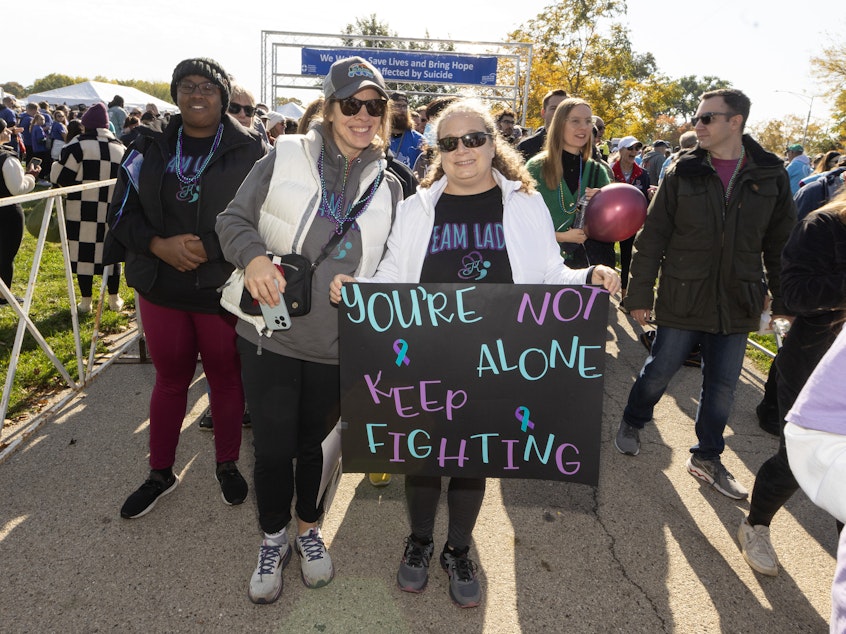Suicide rates rose in 2022 overall but declined for teens and young adults

If you or someone you know may be considering suicide, contact the 988 Suicide & Crisis Lifeline by dialing 9-8-8, or the Crisis Text Line by texting HOME to 741741.
More than 49,000 people died from suicide across the U.S. in 2022, a 3% rise over the year before That's according to a new report released Wednesday by the U.S. Center for Disease Control and Prevention.
"The number in 2022 is the highest ever recorded in the U.S," says Sally Curtin, a statistician at the CDC's National Center for Health Statistics and a lead author of the new report. "These are provisional data, so we expect the final number to actually be a little bit higher than that."
And the overall suicide rate also went up in 2022 compared to the year before, "the highest that it's been since 1941," she adds.
The rate has risen nearly every year since 2000, but there was a brief decline over 2019 and 2020, before the upward trend returned.
The increases occurred across most demographic groups. "Suicide rate increased for both males and females for pretty much all age groups over 35 and for nearly all race and Hispanic origin groups," says Curtin.
The biggest jump for any group was among 55-64 year-old men (a 10% jump). As in 2021, the highest suicide rate in 2022 was among men 75 and older, with 43.7 deaths in a population of 100,000. "That has been a very persistent finding for decades now," she says.
As for girls and women, the overall rates have always been lower than for boys and men. However, the rate for females increased more (4%) than for males (1%) in 2022. The highest rate among women was for 45-54 year-olds with nearly 9 deaths per 100,000 women.
But the new report also found some potentially hopeful changes in the teen and young adult rates.
There was a decline in suicide rates for people aged 10-14 and 15-24 with rates falling by 18% and 9% respectively. "It's the first decline in over ten years" for these younger age groups, says Curtin.
The report points to the 2021 advisory on youth mental health released by the U.S. Surgeon General. "There has been a national effort as well as more localized efforts for youth mental health," says Curtin. "I do think that the awareness has increased. And hopefully that will result in lower suicide rates."
But she cautions against "reading too much" into the decline in 2022, as it could be a one-year fluctuation.
"I'm certainly heartened that the numbers [for these age groups] went down for this year," says says Jill Harkavy-Friedman, senior vice-president of research at the American Foundation for Suicide Prevention, who wasn't involved in the report. "I'll be more heartened if I see them continue to go down."
Overall, the report's finding just emphasize that suicide "continues to be a problem" in the U.S., says Harkavy-Friedman.
"Until we have a national emphasis and focus on addressing suicide, it's going to be hard to drive [the numbers] down," she says.
There are plenty of known ways to prevent suicides, she adds.
"We have interventions, we have treatments," Harkavy-Friedman says. "We also have ways to prevent suicide by helping develop resilience and coping skills at early ages. So we have things we could do to start to drive down the rate."
There is also a national strategy created by the National Action Alliance for Suicide Prevention, which includes efforts to get health care systems to identify individuals at risk of suicide and connect them to appropriate care, as well as getting health plans to pay for suicide care.
"But the strategy also requires implementation," she says. "That means making it happen around the country so that we're actually doing the things we know would help bring down the rate of suicide." [Copyright 2023 NPR]
